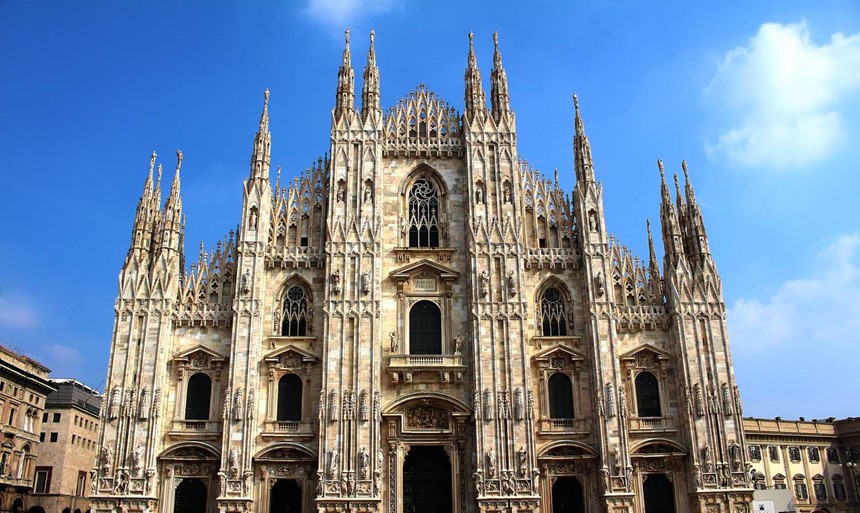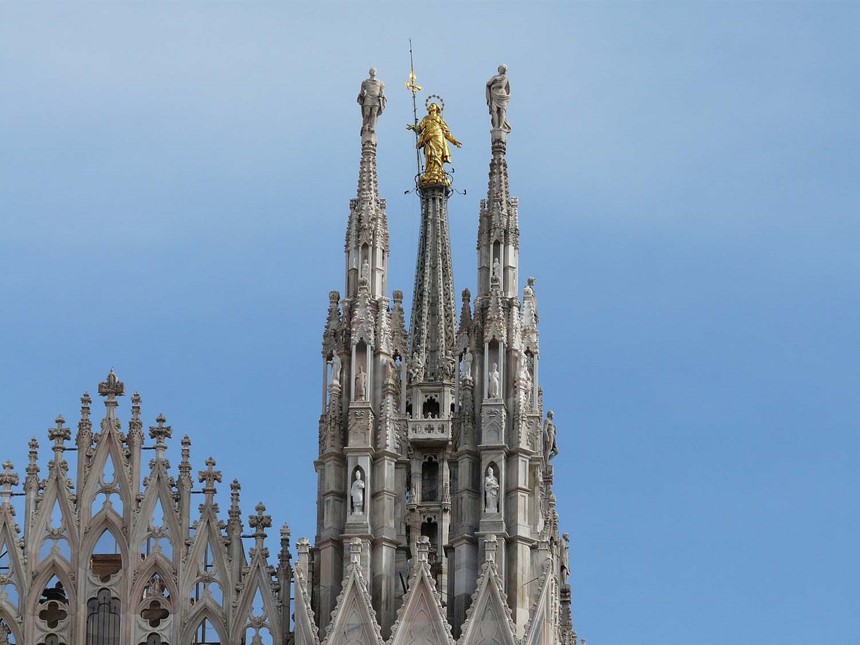1. The Church of the Assumption, Bled, Slovenia
Located on Bled Island and surrounded by water, the Church of the Assumption is breathtaking if not a little eerie. The present form of the Church dates from the 17th century when it was renovated after an earthquake. The main altar with its rich gold-plated carving, dates from 1747.
The bell tower, which was built in the 15th century, has been renovated several times due to damage by two earthquakes - and in 1688 it was struck by lightning! The present tower is 54 m high and has three bells. Like the church, the other buildings, the walls and the monumental staircase (99 stairs) have preserve their look from the 17th century.
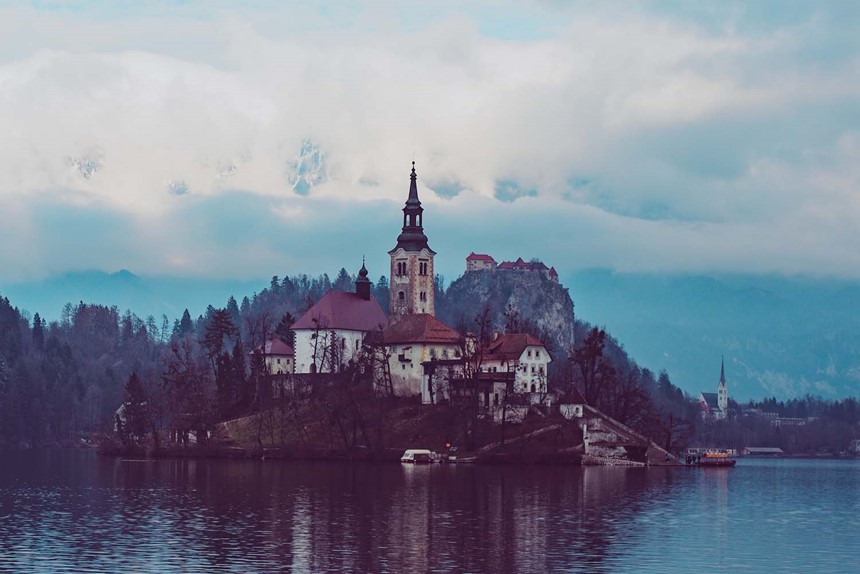
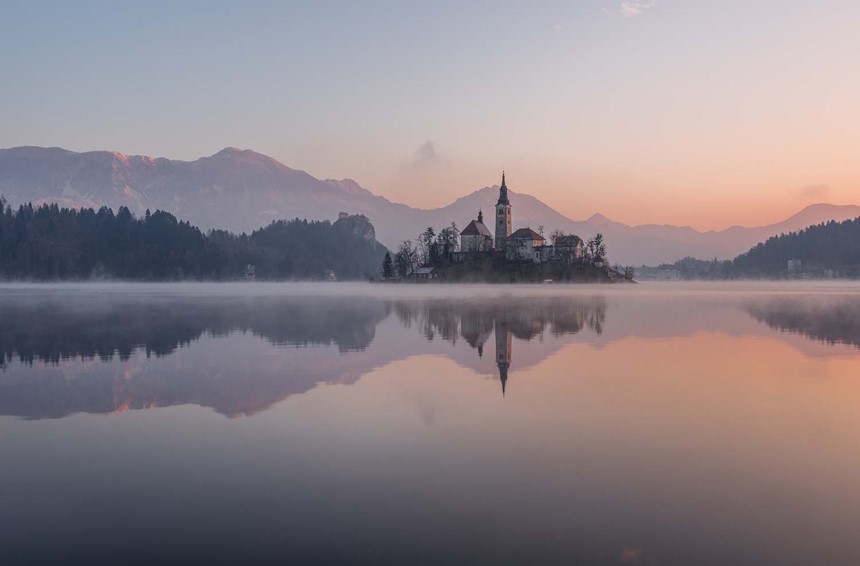
2. Saint Catherine of Siena Chapel, Allenspark, Colorado, United States
The Chapel on the Rock, officially, Saint Catherine of Siena Chapel, is located on the grounds of the Saint Malo Retreat and Spiritual Centre of the Catholic Archdiocese of Denver.
In 1916, Monsignor Joseph Bosetti came across a large rock formation just east of Rocky Mountain National Park and inspired by the Biblical phrase "upon this rock I will build my church", he envisioned a church built on the rock.
His lack of funds delayed construction for nearly 20 years and he struggled with the Colorado Highway Department to keep the rock intact.
Eventually, land for the church was donated by Mr and Mrs Oscar Malo. Denver architect Jacques Benedict designed the chapel which was completed in 1936. In 1999, Boulder County designated the chapel as a historic site.
Pope John Paul II prayed at the chapel during his visit to Denver for World Youth Day in 1993 and he blessed the chapel afterwards. The Pope later hiked in the surrounding woods and spent some time at the Saint Malo Retreat Centre.
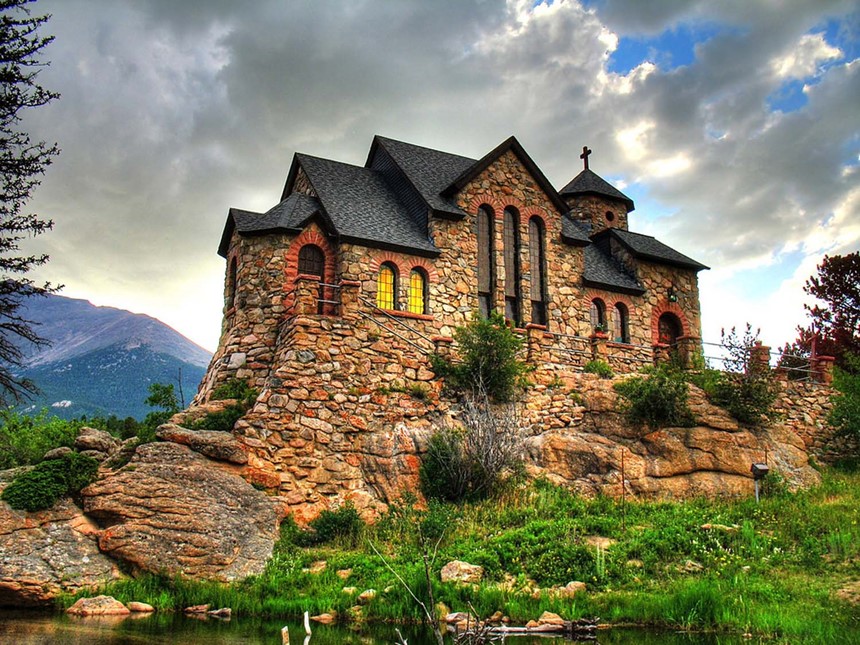
3. Cathedral of Cologne, Cologne, Germany
Kölner Dom or Cathedral of Cologne is one of Germany's most important architectural monuments and is the third tallest cathedral in the world. It took over 600 years to build this Gothic masterpiece and when it was finished in 1880 it was true to the original plans from 1248.
The Cathedral's most precious works of art are the Shrine of the Three Kings, a golden sarcophagus studded with jewels; the Gero Cross, the oldest surviving crucifix north of the Alps; and the "Milan Madonna", an elegant wooden sculpture from the 13th century.
The remarkable Cathedral was designated a UNESCO World Heritage site in 1996.
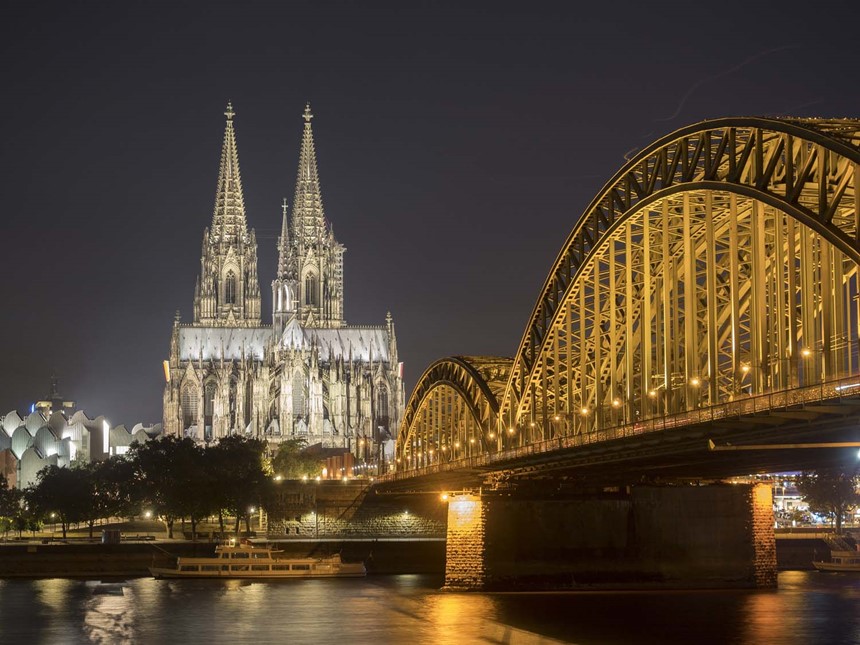
4. Mont Saint Michel Abbey, Mont Saint-Michel, France
The abbey of Mont Saint-Michel looms over the small surrounding village on an isolated island off the coast of France's Normandy region.
The history of the church dates all the way back to the year 709 when Aubert - the Bishop of Avranches - built a small church on the site.
By the 12th century, a large abbey and monastery had been constructed on the site. Today, visitors can visit the isolated town and hike to the top of the island for incredible views and breathtaking architecture.
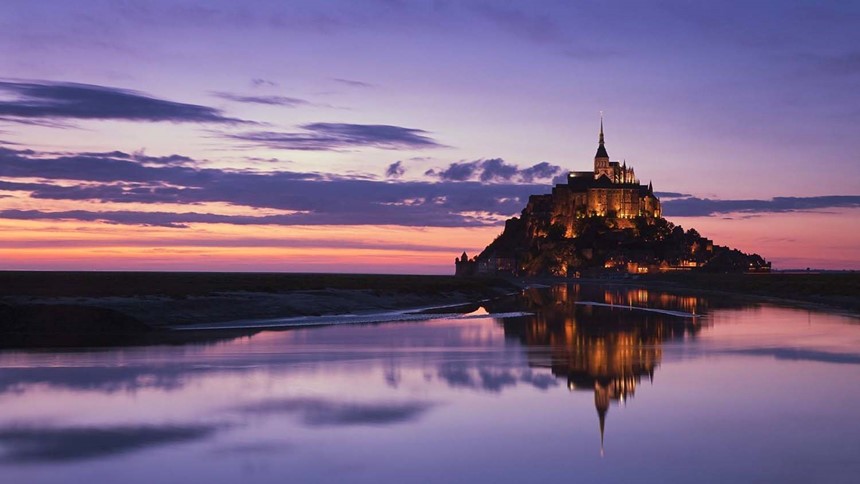

5. The Meteora Monasteries, Kalabaka, Greece
Meteora is a rock formation in central Greece hosting one of the largest and most precipitously built complexes of Eastern Orthodox monasteries. The six monasteries are built on immense natural pillars and hill-like rounded boulders that dominate the local area.
In the Byzantine times, monks had the inspiration to construct monasteries on top of these rocks so that they would be closer to God. The foundation of Meteora monasteries began around the 11th century. In the 12th century, the first ascetic state was officially formed and established a church to the Mother of God as their worshiping centre.
Between the 15th and 17th century, Meteora was at its prime with the arrival of many monks from other monasteries or people who wanted to lead an ascetic life in this divine environment.
The great monk Athanasios Koinovitis brought a group of devout followers from Mount Athos to Meteora, in search of a group of ascetic hermits that had developed a religious stronghold in the region. He was mesmerised by the hermits' free-climbing skills that had allowed them to live in the caves and fissures high above the ground. He also saw an opportunity to create a convent where his flock could meditate and worship in peace. Employing the hermits as climbing mentors, the new visitors conquered the surrounding mountains and set about creating their own holy haven. It was then, from 1356 to 1372, that the first Great Meteoron Monastery was born.
The Meteora Monasteries was designated as a World Heritage site in 1988.
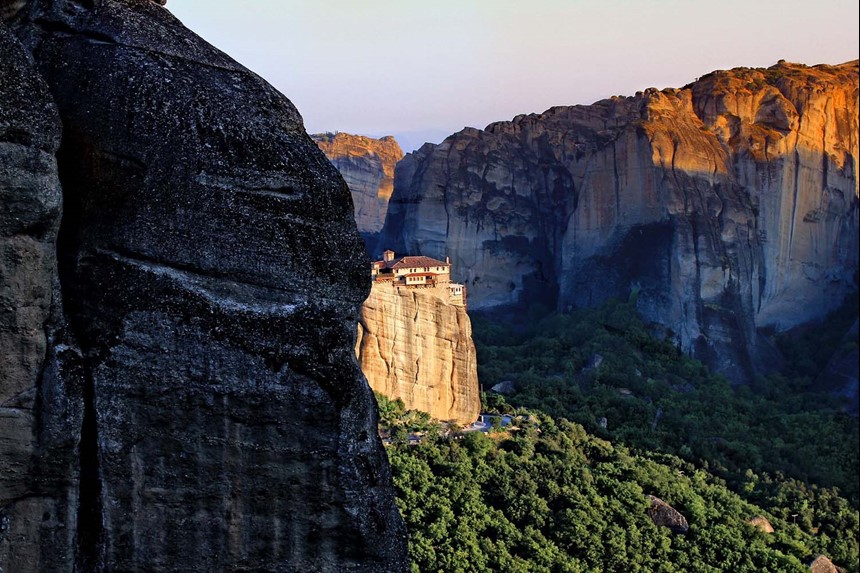
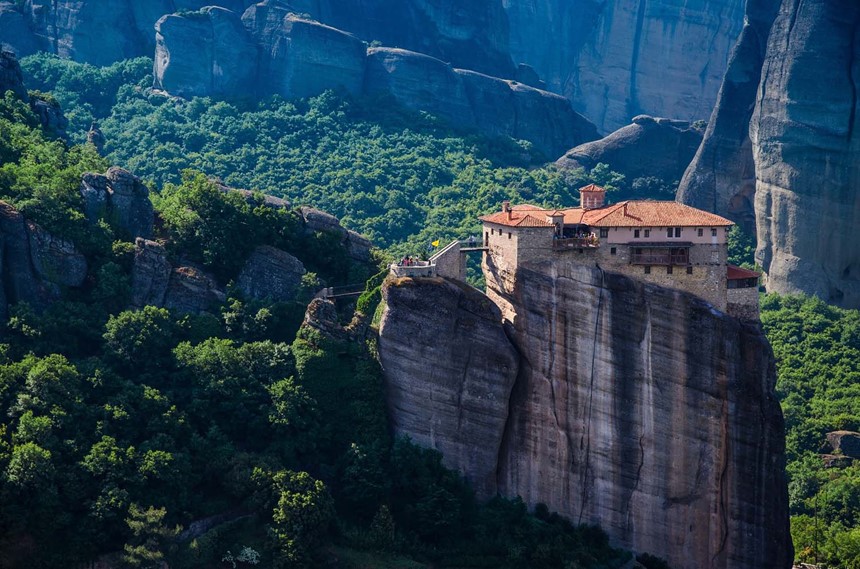
6. Cathedral of Brasilia, Brasilia, Brazil
The Cathedral of Brasília serves as the seat of the Archdiocese of Brasília in Brazil. Designed by Oscar Niemeyer, it was completed and dedicated on 31 May 1970. The cathedral is a hyperboloid structure constructed from 16 concrete columns, weighing 90 tons each.
The cornerstone was laid on 15 September 1958 and the structure was finished on 21 April 1960 - with only the roof structure visible above ground. Once the presidential term of Juscelino Kubitschek ended, the big push to finish many structures in Brasilia stalled. Although it is likely that Kubitschek intended the cathedral as an "ecumenical cathedral" to be paid for by the state and open to all faiths, governments after that did not provide funding so the building was eventually turned over to the Catholic Church to complete. The cathedral was consecrated on 12 October 1968 (still with no roof) and was officially opened by Cardinal D. Eugenio Salles on May 31, 1970. The cathedral was declared a national historic and artistic monument on July 15, 1990.
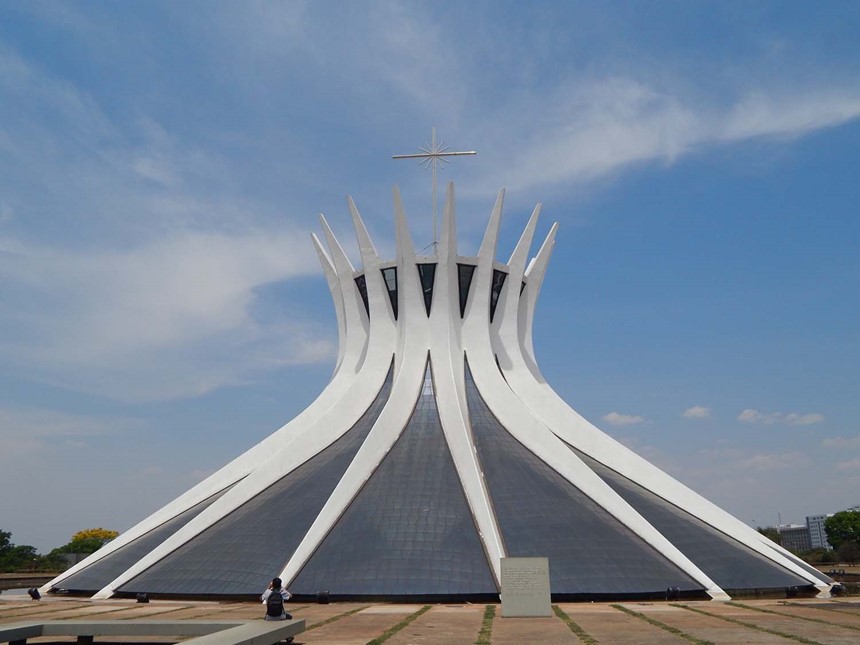
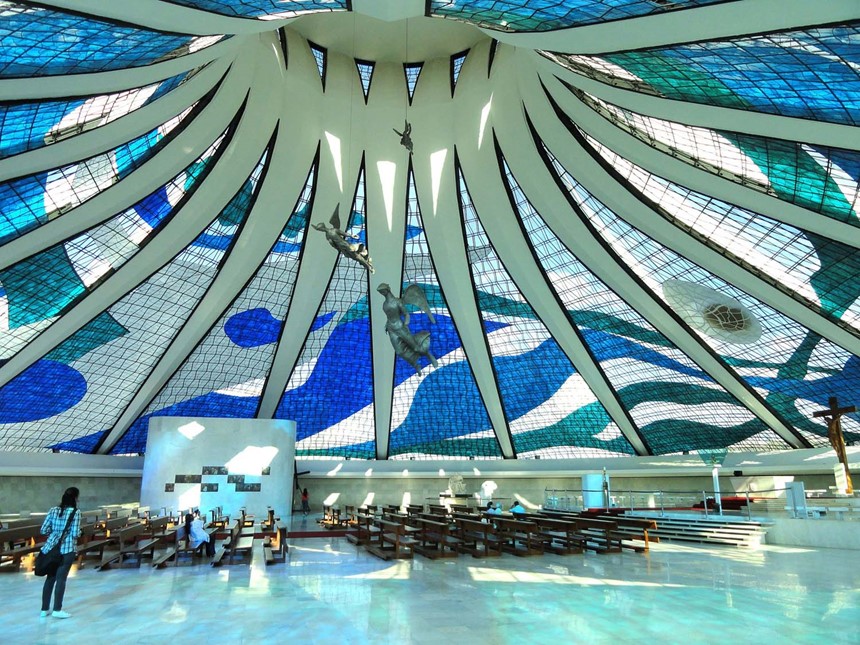
7. Las Lajas Cathedral, Colombia
This cathedral was built over 30 years - over a river gorge on a bridge. The inspiration for the church’s creation was from a miraculous event in 1754 when a woman and her deaf-mute daughter Rosa were caught in a storm at the site. The two sought refuge between the gigantic Lajas, when Rose exclaimed “the Mestiza is calling me” and pointed to an illuminated silhouette over the laja. This apparition of the Virgin Mary instigated popular pilgrimage to the site and occasional reports of cases of miraculous healing. The image on the stone is still visible today.
The present church is built in Gothic Revival style between 1916 and 1949 and is a popular tourist destination.
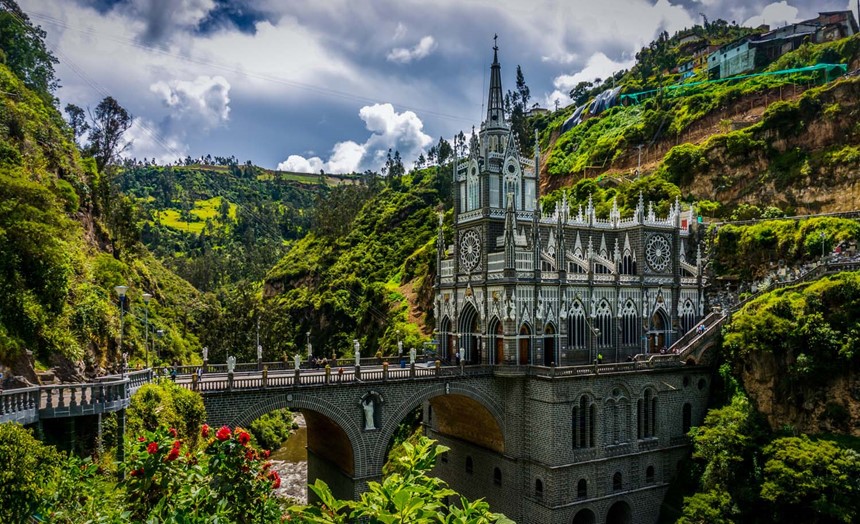
8. Milan Cathedral, Milan, Italy
Milan Cathedral, or Duomo di Milano, is the cathedral church of Milan. Dedicated to St Mary of the Nativity, it is the seat of the Archbishop of Milan - currently Archbishop Mario Delpini. The cathedral took over six centuries to complete. It is the largest church in Italy and the third largest in the world.
Milan Cathedral is adorned with an impressive marble facade and intricate sculpture on the exterior and features magnificent stained glass windows on the interior.
With all its ornate decorations, it comes as no surprise that the cathedral was completed only in 1965 - this after the initial design started in 1396.
